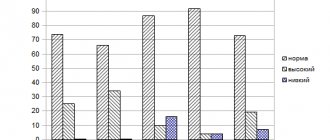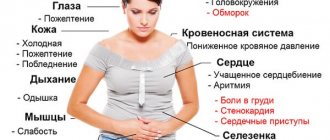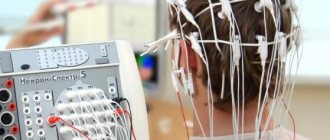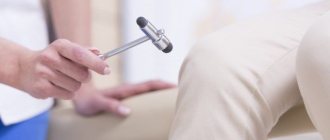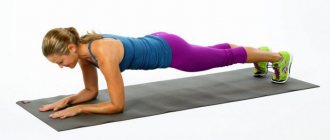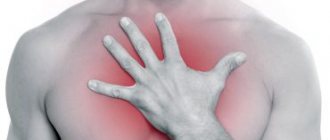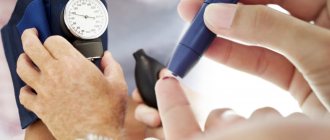Table: how to figure out who to contact
| What's troubling? | Which dentist should I contact? |
| Bleeding gums/Teeth sensitivity | Hygienist or periodontist |
| Missing teeth | Orthopedist |
| Have crooked teeth/bad bite | Orthodontist |
| Tooth hurts / The wall has broken off / There is caries | Therapist |
| The wisdom tooth is painfully erupting / Swelling has appeared on the side of the cheek | Surgeon |
All dentists conduct an examination, consultation, draw up a treatment plan and perform a thorough diagnosis of the entire oral cavity. In modern dentistry, an integrated approach to each clinical situation is valued, taking into account all the individual characteristics of the patient’s body.
Recommendations before visiting a doctor
A visit to the doctor for cystitis does not require special preparation. Before going to the clinic:
- Collect all examination results and expert opinions related to the treatment of cystitis and other urological or gynecological diseases for which you have been treated during the last six months.
- Try to find out a possible hereditary predisposition to the disease and do not forget to tell your doctor about it [3].
- Formulate the questions you want to ask. Remember, or better yet, write down the symptoms, the time of their appearance, possible causes (hypothermia, sexual intercourse, taking medications) that you associate with their occurrence. Remember if you have recently suffered any genital or extragenital infection (sore throat, flu, ARVI, rhinitis, caries) due to insufficient fluid intake [4].
- Carry out normal hygiene procedures. You should not use local medications - suppositories, ointments, gels: they can distort the results of studies prescribed by the doctor.
- Try to refrain from urinating for several hours before your appointment. The doctor may find it necessary to take a swab from the urethra, and a stream of urine can completely wash away or reduce the concentration of pathogenic microflora. In addition, the ultrasound requires that the bladder be full.
Dentist-therapist
The main field of activity of this doctor: treatment and prevention of caries and its complications. What manipulations does:
- treatment of caries;
- endodontics (work in root canals) for pulpitis, periodontitis;
- root canal retreatment;
- chipped fillings, tooth walls;
- carrying out treatment using a microscope (treatment of caries, work in canals);
- providing assistance for acute toothache.
The therapist also conducts a thorough examination and can refer the patient to related specialists if he notices any pathology.
Diagnostics
To identify the cause of back pain, the neurologist prescribes a comprehensive examination. To confirm the inflammatory process, he sends the patient for a blood test. If the white blood cell count is elevated and the erythrocyte sedimentation rate is increased, then inflammation is confirmed.
To check the condition of the spine, hardware diagnostics are indispensable:
- CT scan . CT scan shows the condition of bone tissue in a three-dimensional image. Prescribed for suspected injuries, bruises and fractures of the spine.
- Magnetic resonance imaging . MRI visualizes the condition of the vertebrae, intervertebral discs, spinal cord, and spinal canal. The images distinguish a benign tumor from an oncological one; the degree of compression of the nerve roots and the distance between the vertebrae are determined.
- Ultrasound of the vessels of the neck and brain . It is carried out in triplex or duplex mode to assess the patency of blood flow through arteries and vessels. The thickness of the walls of blood vessels, the presence of narrowings and expansions are checked. Prescribed for frequent dizziness, headaches, and surges in blood pressure.
- Electromyography . It is prescribed to determine the passage of nerve impulses through the muscles. It is performed if stenosis, intervertebral hernia, or protrusion is suspected.
- X-ray of the spine . An inexpensive way to determine the condition of bone tissue. Prescribed for suspected curvature, spondylolisthesis, osteoporosis and spinal column injuries.
Dental hygienist
A dental hygienist has a secondary professional medical education. A prerequisite for working as a hygienist is to successfully complete the course “Preventive Dentistry”. What does a dental hygienist do:
- professional oral hygiene;
- treatment of gums with the Vector device;
- whitening;
- provides training in proper oral hygiene;
- selection of personal hygiene products;
- deals with the prevention of gum disease in adults and children.
In short, the main area of work of a dental hygienist is the removal of dental plaque (tartar, plaque). It is important to see a hygienist every six months to maintain oral health.
Orthopedic dentist
Dental services include dental prosthetics. It is the orthopedic dentist who deals with all types of dental restoration using orthopedic structures. These include:
- crowns;
- bridges;
- veneers, lumineers;
- inlays, overlays;
- mouthguards, splints;
- temporary structures for long-term orthopedic treatment;
- removable and fixed dentures;
- prosthetics on implants.
Prevention
If you have heredity or a sedentary lifestyle, neurologists recommend paying attention to the prevention of back pain.
- Thus, among the recommendations, experts highlight the benefits of massage, daily walking, and contrast showers.
- Body weight control is important. If the weight increases, the load on the spine increases, and the risk of osteochondrosis increases.
- You need to take care of healthy sleep. To maintain posture, you need an orthopedic mattress of medium hardness and an orthopedic low pillow.
- You should start the day with morning exercises. 15 minutes a day of light relaxing exercises will help strengthen your back muscles.
- It is necessary to monitor your diet. The diet should be balanced. Eat more vegetables and fruits, seafood, nuts, and legumes. They contain a lot of magnesium, calcium, and B vitamins to strengthen the myelin sheath of the nerves.
- When working at the computer, watch your posture. You need to keep your back straight. To do this, just lean on the back of a chair, placing a cushion under your lower back. Every hour you should pause, stretch and walk. In addition, it is important to monitor the position of your legs while working - one leg should not be on top of the other.
- When going to the store, you should not carry your bag in one hand. It’s better to split your purchases into two bags and take your handbag in your hands instead of carrying it over your shoulder. Sports activities are beneficial for the body - running, swimming, yoga.
Pediatric dentist
Treatment and extraction of teeth for patients under 18 years of age is carried out by a pediatric dentist. When working with young patients, the primary task is to find contact with the child and get him ready for treatment, because almost all children enter any medical office with fear. In addition, the children's doctor needs to tell the child's parents how to carry out home oral hygiene for the baby, what products to use, when the physiological change of teeth occurs, etc.
Maintaining dental health from a very early age is necessary for the normal formation of the dental system.
What tests need to be taken
- General urine analysis. After toileting the perineum, collect the full morning portion of urine in a sterile container and deliver it to the clinic no later than 1-2 hours later.
- Urinalysis according to Nechiporenko. The collection of material for analysis also takes place in the morning: after hygiene procedures, pour the initial portion of urine into the toilet, collect the main part into a container, and the rest back into the toilet. This way you only collect the average volume into the container.
- The collection of urine for bacterial culture is carried out according to the same rules as for analysis according to Nechiporenko.
Before collecting material, you should give up alcohol, salty, spicy and sour foods, and douching for 2-3 days. 15-20 hours before collection, refrain from sexual intercourse.
This is the minimum program required to determine the cause of cystitis. Additional examinations, as well as the rules for preparing for them, will be described by the specialist who will be involved in the treatment. In addition, he may suggest that you take a rapid test to determine nitrites, leukocytes, protein or a special enzyme in the urine - esterase, which accumulates if there is pus in the urine [4].
Gnathologist
Not everyone has heard of this doctor, and this is no accident. This profession is very rare.
This specialist deals with pathologies of the temporomandibular joint. If the patient is bothered by clicking in the joint, pain when opening the mouth, tooth wear, discomfort in the joint when chewing, then it is necessary to contact a gnathologist to eliminate the pathology.
- Pavel
October 7, 2021 at 08:17Thank you for your article, I learned a lot of new things. I had never had any problems with my teeth in my life, so there was no need to understand the areas of dentistry. And now the situation has changed, the first signs of dental ill health have appeared, we have to figure it out. First, I’ll go to my city free dentistry, then maybe I’ll go to a private clinic. Thank you for the clarification
Administrator
October 10, 2021 at 01:37 pm
Hello, Pavla! We are glad that you found the information useful. We invite you to see our specialists if you need dental care.
Treatment of back pain
Several methods are used to treat back pain. The neurologist chooses the appropriate method, taking into account the clinical characteristics, level of mobility and lifestyle of the patient. If your back hurts, the neurologist prescribes:
- physiotherapy;
- drug therapy;
- exercise therapy;
- manual therapy;
- traction of the spine (dry or water traction);
- massage;
- post-isometric muscle relaxation.
Only if there is no effect and the condition worsens, the specialist resorts to surgical methods.
Let's look at the methods described above in more detail.
The most frequently asked question is how to treat back pain at home? During an attack, before contacting a neurologist, you need to relax your muscles as much as possible and quickly relieve tension from your back at home. To do this, it is better to lie on your stomach on a hard surface, for example, the floor. After a couple of minutes, you need to roll over on your side and bring your knees to your stomach. This exercise will relieve tension from the spine.
The next stage is bed rest and the use of local ointments with an anti-inflammatory effect. For acute pain, it is recommended to apply a compress and alternate cold and heat.
Painkillers for back pain
If local remedies do not alleviate the condition, you should use medications.
In case of acute pain, the ambulance team places a therapeutic blockade. This involves injecting painkillers into nerve points. They quickly relax muscles and relieve spasms.
Chronic back pain is relieved by a course of injections of B vitamins, taking muscle relaxants and non-steroidal anti-inflammatory drugs and analgesics.
Physiotherapy for back pain
Physiotherapy helps to enhance the effect of medications. Most often used in neurological practice:
- laser therapy;
- phonophoresis;
- electrophoresis with analgesics;
- UHF therapy;
- magnetotherapy.
Patients also undergo a course of acupuncture and electrical neurostimulation.
Exercise therapy
A physical therapy doctor will select exercises for back pain. Gymnastics and light physical activity relieves tension, normalizes blood flow, and strengthens the muscle corset. Exercises are started only during remission, when there is no pain.
Common exercises:
- Lying on your back and pressing your shoulder blades to a hard surface, press your knees to your stomach. Without lifting your back, pull your knees first to the left, then to the right.
- Hang on a horizontal bar or bar for several minutes every day. Traction increases the distance between the vertebrae and reduces compression of the nerves.
- Get on the floor on your knees and hands. Keeping your arms straight, move your pelvis back and down. The exercise is considered successfully completed when the heels touch the pelvis.
- Place your feet shoulder-width apart and your hands on your waist. Rotate your pelvis left and right in a circle.
- Lean on a flat wall, resting your heels, pelvis, shoulder blades, shoulders and head. Stand in this position every day, increasing the time each time.
- Lying on your stomach, bend over so as to lift your legs, head and chest off the floor.
- Lying on your stomach, stretch your arms forward and close your legs. Raise your left leg higher, trying to keep it straight. Repeat the exercise on the right leg. Every movement should be smooth and slow. There should be no pain or discomfort.
